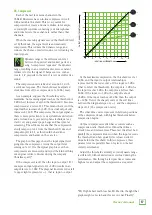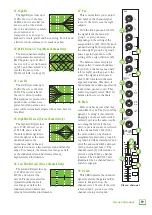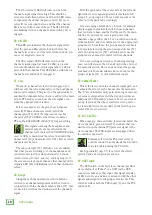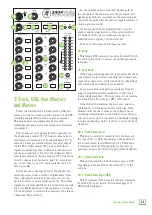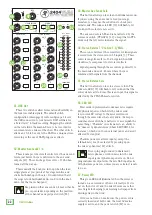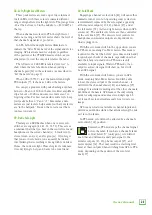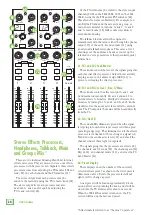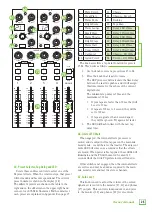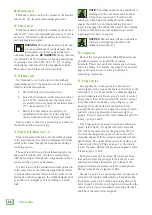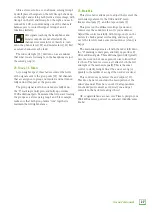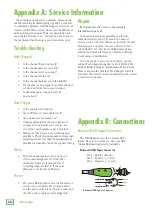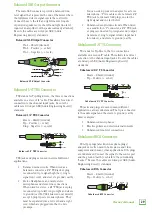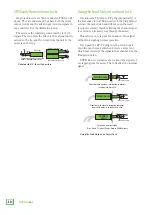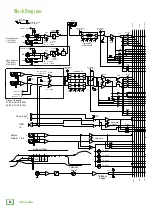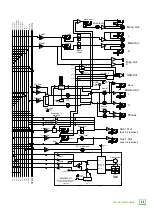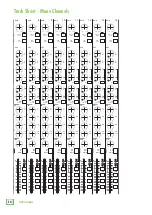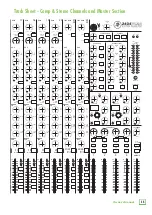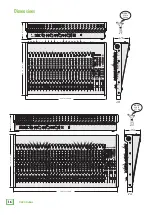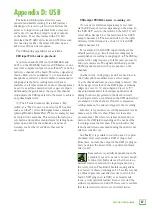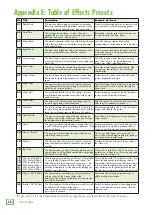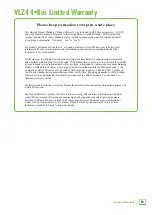
27
Owner’s Manual
Afl is a stereo solo bus, so in afl mode, soloing Group 1
by itself places the signal on the left, Group 2 shows up
on the right, and soloing both yields a stereo image, with
Group 1 on the left and Group 2 on the right, and each
reduced by 3 dB, not unlike using one of the channels'
balance pots to center the signal. Groups 3 and 4
function similarly.
Solo signals reaching the headphones and
monitor outputs are not affected by the
channel level or main level; therefore, turn
down the phones level [69] and monitor level [68] first,
as soloed channels may be loud.
The rude solo light [59] will turn on as a reminder
that what you are listening to in the headphones is just
the soloed group(s).
74. Group 1-4 Faders
As you might expect, these faders control the levels
of the signals sent to the group outs [11]. All channels
that are assigned to groups, not muted, and not turned
fully down will appear at the group outs.
The group signal is off when its fader is fully down,
the “U” marking is unity gain, and fully up provides
10 dB additional gain. Remember that if you are treating
two groups as a stereo pair, group 1 and 2 for example,
make sure that both group faders “ride” together to
maintain the left/right balance.
75. Main Mix
This stereo fader allows you to adjust the levels of the
main mix signals sent to the XLR and 1/4" main
line-level outputs [7], and the tape outputs [6].
This gives you the ultimate feeling of power and
control over the sound levels sent to your audience.
Adjust this control carefully, with your good eye on the
meters to check against overloading, and your good
ear to the levels to make sure your audience (if any) is
happy.
The main mix signals are off with the fader fully down,
the “U” marking is unity gain, and fully up provides 10
dB of additional gain. This additional gain will typically
never be needed, but once again, it’s nice to know that
it’s there. The fader is stereo, as it affects both the left
and right of the main mix equally. This is the ideal
control to slowly bring down at the end of a song (or
quickly in the middle of a song if the need ever arises).
This control does not affect the aux outputs [13].
This does, however, conclude the main portion of the
owner's manual. From here on out it's all appendices.
You should pour yourself a cold, frosty one and pat
yourself on the back for making it here!
Ok, congratulations are now over. Time to plug in your
VLZ4 4•Bus mixer, power it on, and start twiddlin' some
knobs!





